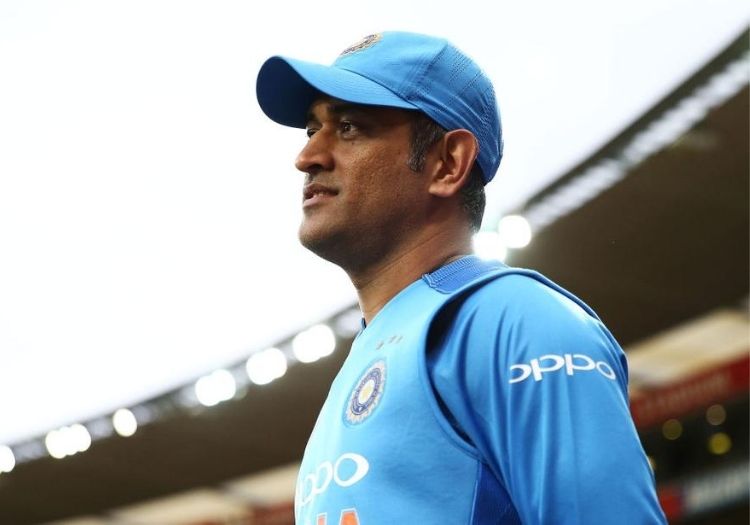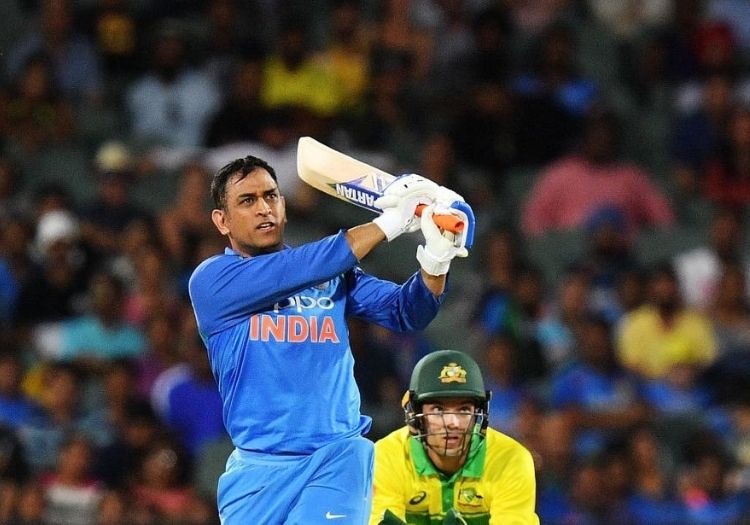TEDDIE CASTERTON: There are so many moments to choose from in the career of MS Dhoni, who announced his retirement via Instagram on Saturday. Here, The Cricketer looks back at eight of his finest knocks

MS Dhoni’s first international hundred – an occasion that might not have meant a great deal at the time, but the significance of which has grown over the years as a fledgling career became a formidable existence as one of India’s most influential cricketers of all time.
Played out in Visakhapatnam, India had won the toss and elected to bat. Sachin Tendulkar was run out for just two, bringing Dhoni to the crease earlier than he might otherwise have been accustomed to. Alongside Virender Sehwag, the two blasted the Pakistan bowlers to form a partnership of 96 before Sehwag was dismissed in the 14th over.
Rahul Dravid replaced him, with Dhoni then making 99 runs in a 149-run partnership, using up only 76 deliveries. His maiden ODI century saw him score 15 fours, and four sixes, taking him to 148 off of 123 deliveries with a strike rate of 120. He smashed 15 fours and four sixes in his innings, taking India's total to 356 for 9 in their fifty overs.
Sri Lanka thought they had made a competitive total of 298 for 4 in their allotted fifty overs. Yet, India, led by Dhoni eased to a win with 23 balls to spare.
He smashed 183 not out in just 145 balls – the highest score recorded by a wicketkeeper in an ODI, hammering 15 fours and 10 sixes, not to mention the fact that his last 53 runs were scored with a runner by his side. Kumar Sangakkara head earlier made an unbeaten 135 of his own – a knock laid to rest by Dhoni’s own brilliance.
MS Dhoni announces retirement in four-minute Instagram video
A reminder, if one was needed, that a World Cup-winning, T20-changing great was also a fine Test cricketer. Dhoni’s 224 against Australia in 2013 was not only the highest score by an Indian wicketkeeper in Test cricket but also the highest made by an Indian captain. His swashbuckling effort helped India reply to Australia’s 380 with a total of 572. Dhoni showed his excellence by carrying his team – the cliched captain’s innings becoming a reality.
A 128-run stand with Virat Kohli put pressure on the Aussies throughout the middle period, before Dhoni continued his assault long after Kohli fell. His 224 runs featured 24 fours and 6 sixes, creating a path for India to sail down and win the game with a huge first innings lead that Australia could never truly recover from.

The moment that cemented a legend...
Although India ultimately lost the game – the first ODI of Pakistan’s trip to the country, it was Dhoni’s excellent 113 not out that gave his team even the slightest glimmer of hope. India found themselves 29 for 5 by the tenth over, before Dhoni struck a tenacious 113 off 125 balls. With seven fours and three sixes, he helped India drag themselves to a total of 227 for 6. In a 125-run stand with Ashwin, he scored 91 runs off just 62 deliveries, albeit ultimately in a losing cause.
Perhaps the innings with which Dhoni will always be best associated – and not a bad one at that. A match-winning effort in a World Cup final on home soil. Sri Lanka batted first, reaching 274 for 6, with Mahela Jayewardene making 103. India’s reply began tentatively; Virender Sehwag was dismissed by his second ball and Sachin Tendulkar in the sixth over. Dhoni came in at five and saw his side home, with his unbeaten 91 writing his name into folklore and ensuring – even almost a decade ago – that his legend would stand the test of time.
A 109-run stand with Gautam Gambhir took India to 223 for 4 before he was dismissed, while Dhoni carried on at the other end. Requiring 16 runs off the last three overs, he took on Lasith Malinga, striking consecutive boundaries to relieve the pressure. And it was fitting that it should be Dhoni who served the final its last rites, smashing Nuwan Kulasekara over long-on for what might just be the white-ball game’s most famous six.
Rising Pune Supergiant required 23 runs off of the final over in what seemed like a game that had run away from them and into the hands of the Kings XI Punjab. But Dhoni’s heroic’s managed to seal the win; a thrilling display of power-hitting. The first ball was a dot before the second was called wide. Dhoni clubbed the next over long-on for six. The next saw Dhoni hit out to deep cover for what could have been two runs.
Instead, though, he declined and kept the strike to himself. Given what the game has come to know of Dhoni, what followed should have come as no surprise: he powered the next three deliveries to the boundary – one for four and two for six, winning his team the game in the process. He has played bigger, more significant knocks, but this one stands out as a reminder of the unrivalled calm that for soe long placed him in a league of his own.

Dhoni at the crease against Australia last year
Other innings have been more eye-catching, but few summed up the ice-cool composure of the man quite like this. He effectively strolled to 44 off 58 balls in an ODI against Australia, hitting only one boundary in the process. That single stroke came in the last over – a towering six over the legside when India required 13 off six balls.
He smashed McKay over long-on, reducing the target to just six after Ravi Ashwin had taken a single off the previous delivery. It was then that Clint McKay followed up with a no-ball, and then Dhoni added two more runs. The winning runs arrived one ball later. Dhoni, who hadn’t scored a boundary until that final over, showed once more that in the heat of the moment under pressure, he wasn’t one to be fazed.
Faced with a nominal target of 380 and 96 overs in which to survive, Dhoni came to the crease at Lord’s in 2007 just 47.2 overs into India’s fourth innings, having gone without scoring earlier in the game. An 86-run partnership with VVS Laxman was an initial show of defiance, during which time he fought for 37 off 88 balls. Once Laxman fell, Anil Kumble, Zaheer Khan and RP Singh followed, bringing Sreesanth to the crease.
Once more, Dhoni was the coolest man out there, throwing ice on the English fire in a final pair stand of 19 and remaining unbeaten, leaving his team on 282 for 9 and drawing the game. This was an early itineration of the player he would become – an effort in the game’s longest format that should act as a reminder of the extent of his talents and adaptability.
For unrivalled coverage of the county season, subscribe to The Cricketer and receive four issues for £15